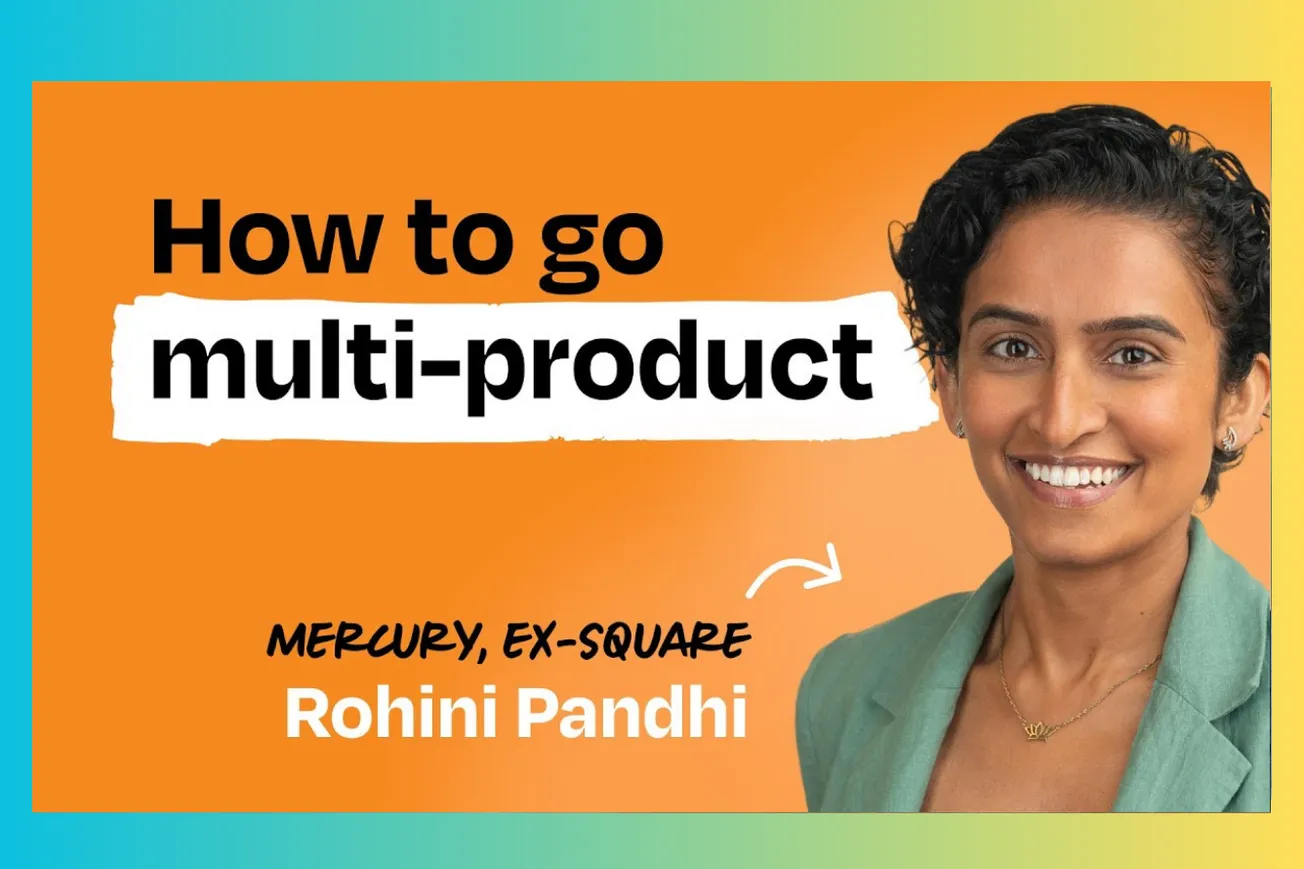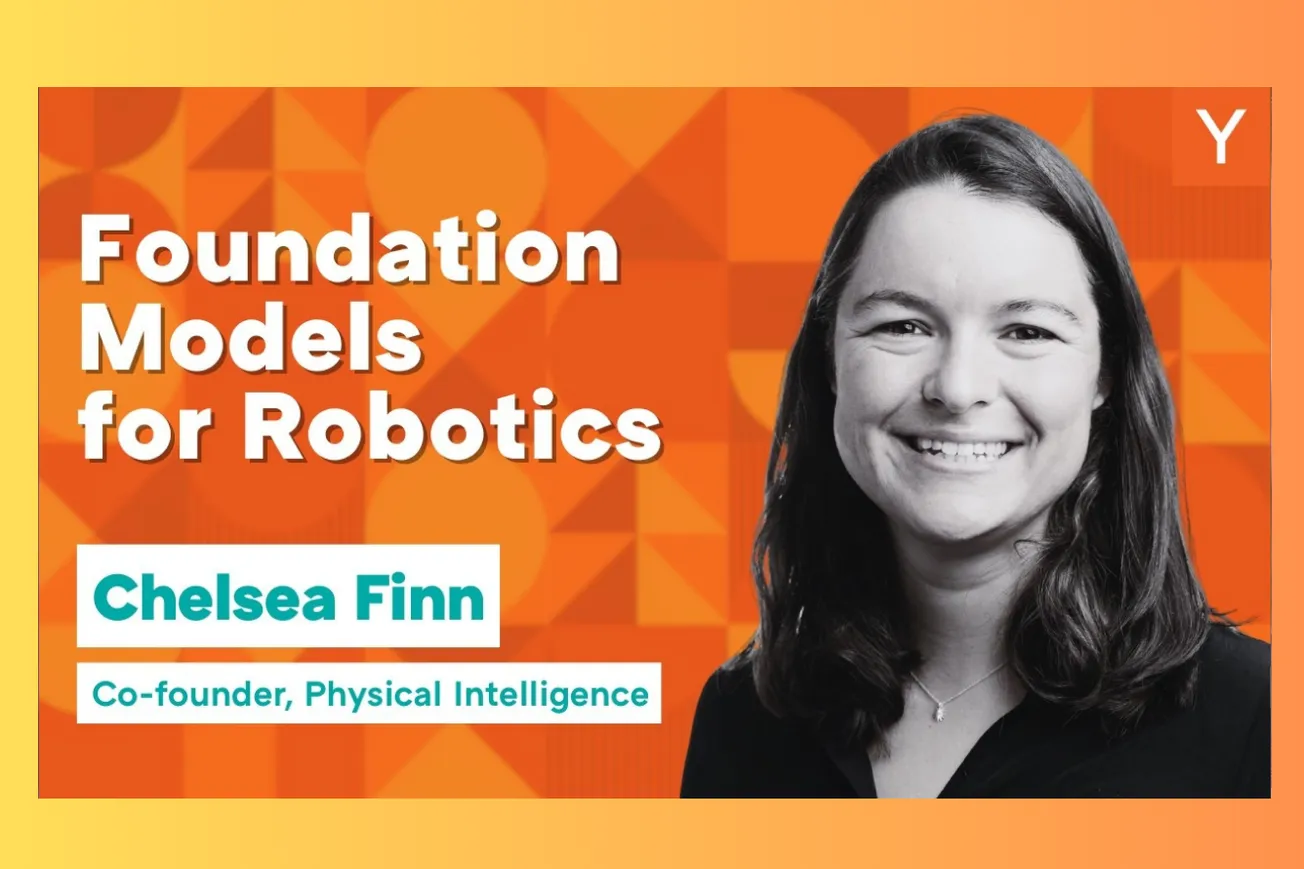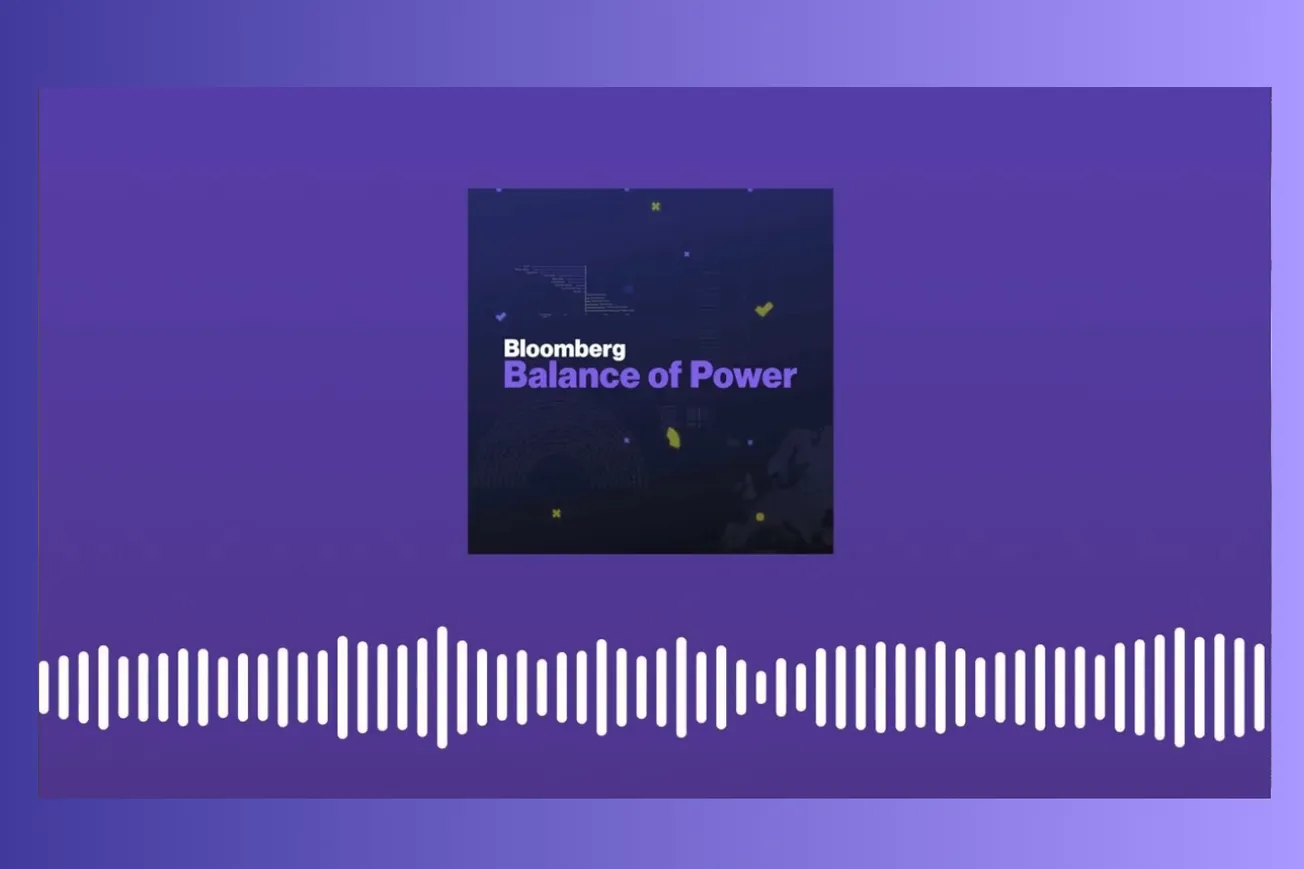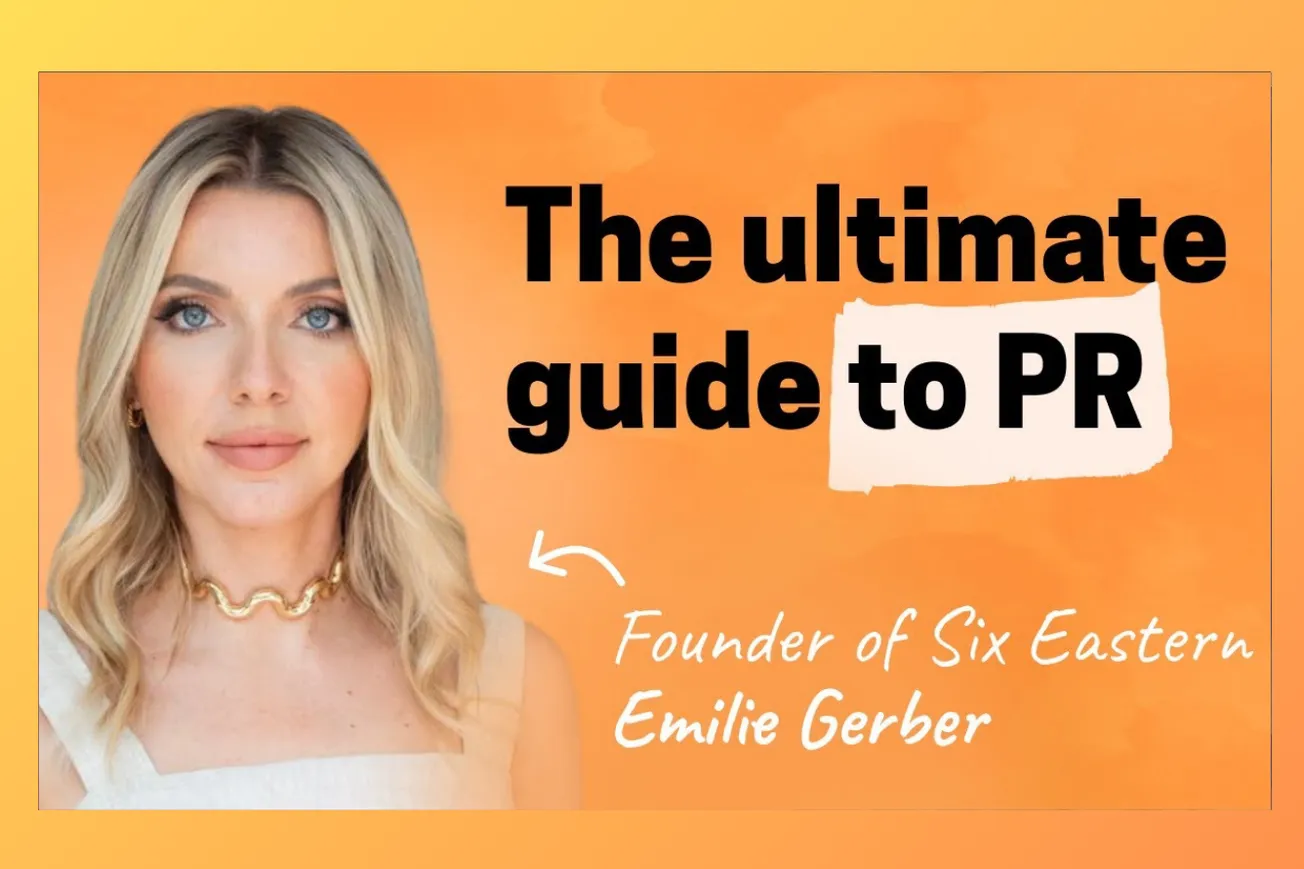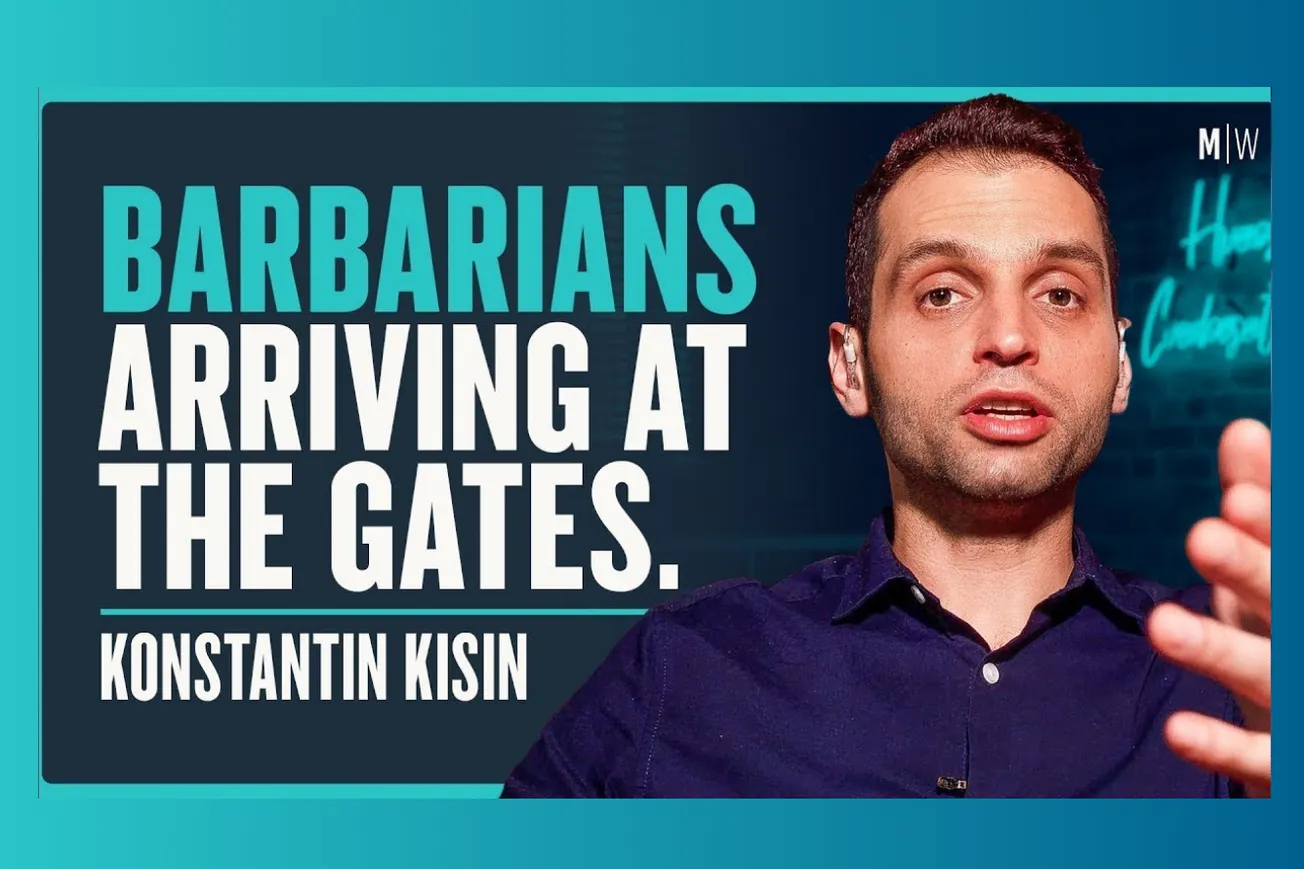Table of Contents
Mercury product leader Rohini Pandhi shares her playbook for scaling product teams from zero to 30 PMs, launching multiple new product lines, and creating a culture of quality.
Building a world-class product organization requires knowing when to hire your first PM, how to attract exceptional talent, and creating structures that enable multi-product success without sacrificing quality.
Key Takeaways
- Founders should resist hiring product managers too early—they need to be the original PM until they become the bottleneck or can't scale decision-making.
- Key indicators for hiring PMs include work not getting done without founder involvement, engineers/designers doing PM duties instead of core work, and expanding into adjacent product areas.
- Product managers come in three flavors: Pioneers (0-to-1), Town Settlers (growth stage), and City Planners (mature products at scale)—match the right type to your needs.
- Attracting top talent requires understanding where candidates are on the career S-curve (ambiguity vs. scale) and offering appropriate challenges for their next growth phase.
- Quality and craft can be competitive differentiators, especially in "boring" industries like fintech where details breed the trust customers need.
- Multi-product success demands organizational separation—new product teams need dedicated resources and protection from mature product gravitational pull.
- Customer obsession requires being a documentarian and researcher, not seeking bias validation, while balancing customer wants with business viability.
- Successful new products should be adjacent to core offerings, leverage existing distribution advantages, and show early signal before building.
- Give new product investments 6-month cycles with concrete goals while allowing for pivots and learnings typical in early-stage ventures.
Timeline Overview
- 00:00–05:00 — Rohini's Background: Product leader journey from Square to Mercury, working on payments, invoicing, and hardware Bitcoin wallet
- 05:00–09:51 — Mercury's PM Evolution: Journey from proud anti-PM company with 400 employees to 30 product managers today
- 09:51–13:18 — Indicators for Hiring PMs: Bottlenecks, complexity growth, engineers/designers doing PM work instead of core responsibilities
- 13:18–19:53 — Building Product Team Foundation: Creating career ladders, interview processes, and defining PM expectations and values
- 19:53–22:26 — Timing PM Hires: Why founders should avoid hiring PMs too early and remain close to customers and product decisions
- 22:26–26:15 — PM Types Framework: Pioneer (0-to-1), Town Settler (growth), City Planner (mature) matching to company needs
- 26:15–35:59 — Attracting Top Talent: Understanding career S-curve of ambiguity vs. scale, communicating challenges and team quality
- 35:59–44:10 — Quality as Competitive Advantage: Investing in craft and details for trust-building, especially in boring industries like fintech
- 44:10–46:37 — Multi-Product Strategy: Mercury's 2024 launches including personal banking, bill pay, invoicing, and accounting workflows
- 46:37–50:57 — Organizational Structure for Multi-Product: Creating separate expansion org to protect seedling products from mature product gravity
- 50:57–52:07 — Multi-Product Culture: Different operating rhythms, heavy customer research culture, weekly customer conversations
- 52:07–57:36 — Customer Obsession Framework: Being documentarian vs. bias-seeking, balancing customer wants with business needs
- 57:36–01:05:57 — Multi-Product Lessons: Adjacency selection, distribution advantages, pricing strategies, and common missteps
- 01:05:57–01:09:54 — Transparent Collective: Supporting underrepresented founders with resources, connections, and funding preparation
- 01:09:54–End — Lightning Round: Book recommendations, Apple TV shows, Waymo experience, life mottos, angel investing approach
The Anti-PM Company That Learned to Love Product Managers
Mercury's journey from proudly having zero product managers at 400 employees to building a 30-person PM organization offers valuable lessons for founders wrestling with the question of when and how to build product teams.
The company succeeded without PMs for years because their founders served as the original product managers. This wasn't accidental—they maintained customer obsession, made intentional product decisions, and hired amazing engineers and designers who already had product mindsets. The key was that someone was doing the product work, even without the official title.
The inflection point came when bottlenecks started appearing. Founders became decision-making chokepoints, slowing or halting progress when unavailable. Complexity grew beyond what three co-founders could handle, especially in fintech's regulated environment requiring extensive cross-functional collaboration with compliance, legal, and risk teams.
Rather than hiring traditional PMs immediately, Mercury first hired "business leads"—generalists who handled cross-functional coordination and project management duties. Only later did they officially transition these roles to product management, revealing a crucial insight: the individuals lacked core PM skills like strategic planning, roadmapping, prioritization, and customer research.
This experience highlights why rushing to hire PMs too early can backfire. Companies need to be clear about what product management means in their context before bringing in specialized talent.
The Three Flavors of Product Management
Not all product managers are created equal, and hiring the wrong type for your context guarantees frustration. Rohini uses a powerful framework from Square that categorizes PMs into three distinct types:
Pioneers excel at 0-to-1 product development. They thrive in uncharted territory with no existing infrastructure, building something from nothing using available resources. These PMs often have entrepreneurial backgrounds and comfort with extreme ambiguity.
Town Settlers operate best during growth stages when basic infrastructure exists but significant expansion and experimentation are needed. They build foundational elements while preparing for future scale, balancing current needs with long-term vision.
City Planners specialize in mature products affecting millions of customers where every change must be carefully considered. They excel at driving efficiency at scale and managing complex systems where small improvements generate massive impact.
The framework explains why founders often resist PMs—they're thinking of City Planners when they actually need Pioneers. A former entrepreneur or founder serving as a Pioneer PM can be exactly what an early-stage company needs.
Mercury uses different PM types across their portfolio. Their core banking services require City Planner expertise because everything affects customers at scale and requires careful measurement. Meanwhile, their expansion products need Pioneer skills to build new categories from scratch.
Building Your Product Organization Foundation
Creating a successful product organization requires establishing clear expectations before hiring your first PM. Mercury's approach involved several key steps:
Define the discipline by creating a career ladder that explicitly outlines PM expectations at different levels. This isn't just about typical skills—it's about codifying what product management means at your specific company, including company values like humility and low ego.
Establish success criteria around two core vectors: building products customers genuinely love, and creating positive business impact through outcome-based work. These become filtering mechanisms for both hiring and performance evaluation.
Design interview processes that test for specific skills you value. Mercury focuses on product sense, customer obsession, analytical skills, and systems thinking. They're experimenting with adding written components because quality writing demonstrates depth of thinking and communication clarity.
Create supporting infrastructure including relationships with UX research teams, customer access processes, and decision-making frameworks that enable PMs to succeed once hired.
The key insight is treating your PM organization build-out as a product itself—start with clear requirements, iterate based on feedback, and continuously improve the foundation as you scale.
The Career S-Curve: Understanding What Attracts Top Talent
Great product managers don't just want good companies—they want roles that advance their careers in meaningful ways. Understanding this requires thinking like a product manager about your candidates' motivations and growth trajectories.
Every career follows an S-curve with ambiguity on the Y-axis and scale on the X-axis. Early career PMs start near the origin—low ambiguity, low scale projects like "improve onboarding conversion." They progress to handling multiple low-ambiguity projects simultaneously.
The inflection point comes with highly ambiguous challenges like "10x revenue in 12 months." These problems have many potential solutions, most wrong approaches, and require figuring out which way is up. Successfully navigating this ambiguity launches PMs to the top of the S-curve.
Senior PMs operate entirely in ambiguous territory at scale—think VP or CPO level where everything involves strategic questions without clear answers across multiple domains simultaneously.
To attract great talent, understand where candidates are on this curve and what their next growth step requires. Senior folks want to know if problems are meaty enough to wake up excited every day and whether they'll be challenged to become better PMs.
The second crucial factor is peer quality. Like tennis players wanting to practice with slightly better opponents, great PMs want to work with exceptional engineers, designers, and other PMs who will push them to improve.
Quality as Competitive Advantage in Boring Industries
While many PM organizations obsess over metrics and experimentation, there's tremendous opportunity in investing in quality and craft, especially in traditionally "boring" industries like fintech.
Mercury's bill pay feature exemplifies this approach. When customers upload invoices, the system uses OCR to read details and pre-populate fields. As customers verify information, the right side of the screen automatically zooms to highlight relevant invoice sections.
This small detail won't move completion rates or any singular metric, but it consistently generates customer delight. People tell Rohini they loved using a product to pay bills—something you never hear. The cumulative effect of these intentional improvements creates competitive moats and attracts top talent who want to build products they're proud of.
The strategy works particularly well in industries where trust and confidence are paramount. In fintech, customers need to feel secure saving and moving money with you. Precise, intentional details breed the trust required for these relationships.
Quality also creates compound effects: it differentiates you from competitors, attracts great talent who want to build beautiful products, and endears customers who recognize you focus on what matters to them.
The caveat is that quality must be a cultural value from the top. Individual PMs can't successfully advocate for quality investment without founder and leadership support for this differentiation strategy.
Multi-Product Organizational Structure: Protecting Seedlings
Mercury launched six new products in 2024—personal banking, bill pay, invoicing, updated spend controls, employee reimbursements, and accounting workflows. Each subsequent launch took less time than the previous, demonstrating systematic improvement in multi-product development.
The key organizational insight is that new products need protection from mature product "gravitational pull." When new product teams sit too close to core banking or payments in organizational structure, their roadmaps get consistently trumped by maintenance work and higher-impact projects from mature products.
Mercury solved this by creating a completely separate expansion organization with dedicated resources that operate like small seed-stage companies. Every quarter or half-year, they evaluate each new product like an investment decision—should we continue funding this "startup" based on progress and learnings?
This separation isn't just about resources—it's about creating different operating rhythms. Mature products use monthly development cycles with predictable roadmaps. New products need two-week sprints with weekly check-ins to stay nimble and responsive to rapid learning cycles.
The expansion org also maintains a heavy customer research culture. PMs are expected to have at least one customer conversation weekly, with teams in discovery mode conducting 20-25 calls regularly. This customer obsession enables rapid iteration and product-market fit discovery.
Customer Obsession: Documentarian vs. Bias Validation
True customer obsession requires a specific mindset that many companies claiming to be "customer-obsessed" actually miss. The key is approaching customer conversations as a documentarian and researcher rather than seeking bias validation.
Customers are naturally polite, especially on phone calls. They'll say nice things about your product, claim they made mistakes when experiencing poor UX, and try to take pressure off you as the builder. Going into conversations seeking validation guarantees you'll find it, regardless of reality.
Instead, approach conversations as a third-party observer documenting what's happening. You're being brought into the jungle to watch animal behavior—your job is understanding what customers are trying to accomplish, in what context, and identifying patterns that emerge across multiple conversations.
This truth-seeking must then be balanced with business viability. Just because customers want something doesn't mean you should build it (they probably want free products, which doesn't work). Customer obsession needs anchoring in business needs and what you can actually deliver sustainably.
The framework extends beyond formal research. Mercury monitors Twitter/X interactions, tracks why customers leave through real-time Slack channels, and encourages all team members to participate in customer support conversations. These touchpoints provide continuous customer input across the organization.
Selecting New Products: Adjacency and Distribution Advantages
Successful multi-product expansion requires systematic thinking about which products to build next. Mercury uses specific criteria to evaluate opportunities:
Adjacency to core offerings ensures new products serve similar customer segments without requiring completely different go-to-market strategies. Mercury's invoicing product targeted customers already using their payment requests feature—people already doing invoice-like activities.
Distribution advantages within existing products enable testing without full go-to-market investment. Mercury could experiment with invoicing by prompting existing users rather than acquiring entirely new customer bases.
Early signal validation through observing customer behavior around related features provides evidence of demand before major investment. Payment requests showing traction indicated potential for fuller invoicing solutions.
Natural workflow integration allows new products to surface at relevant moments in customer journeys. When sending payments, Mercury highlights bill pay for customers needing more complex vendor payment capabilities.
The approach prioritizes building on existing strengths rather than expanding into completely new territories. This reduces risk while enabling faster validation and iteration cycles.
Common Multi-Product Missteps and Lessons
Several patterns emerge from Mercury and Square's multi-product journeys that other companies can avoid:
Trying too many things simultaneously spreads resources too thin to properly nurture any new product. Like seedlings that need enriched soil and consistent watering, new products require focused attention and adequate resourcing.
Premature revenue optimization before establishing product-market fit. Mercury deliberately offers new products free initially to encourage usage and engagement, only introducing pricing once customers see clear value and need increased complexity.
Underestimating pricing complexity around bundling, cart models, willingness-to-pay research, and finding the right ICP for paid offerings. These decisions require extensive customer research and experimentation.
Focusing on numbers instead of product love as the primary optimization target. Both Jack Dorsey and Mercury's co-founders emphasize building products people love—revenue becomes a byproduct of genuine customer affection.
The overarching lesson is treating each new product like an independent startup with its own timeline, resources, and success criteria, while leveraging the parent company's distribution and infrastructure advantages.
Transparent Collective: Supporting Underrepresented Founders
Beyond her corporate product work, Rohini co-founded Transparent Collective, a 501(c)(3) organization helping underrepresented founders access resources and connections to build successful tech companies.
The organization emerged from recognizing that fundraising experiences vary dramatically by geography and founder background. What feels like obvious tribal knowledge on the coasts requires significant learning curves for founders in Detroit, Baltimore, or Atlanta.
Their flagship program flies 8-10 founders to San Francisco for week-long intensives covering mentoring, workshops, mock investor meetings, and hands-on training. They pay all expenses and focus on non-coastal founders with amazing companies who need connection to West Coast investor networks.
Results speak to the program's effectiveness: 65-70% of their 90+ alumni have raised venture funding, totaling $125 million in early-stage fundraising. About 10% have already achieved acquisitions and exits.
The organization represents both immediate impact and systematic change—helping individual founders succeed while contributing to more inclusive startup ecosystems that recognize talent regardless of geographic or demographic background.
Common Questions
Q: When exactly should we hire our first product manager?
A: When you as a founder become the bottleneck for product decisions, or when engineers/designers are spending significant time on PM duties instead of their core work.
Q: How do we know what type of PM to hire?
A: Match PM types to your needs: Pioneers for 0-to-1 products, Town Settlers for growth stage, City Planners for mature products at scale.
Q: What's the most important thing when building a PM team?
A: Clearly define what product management means at your company through career ladders and expectations before hiring anyone.
Q: How do we compete for top PM talent?
A: Understand where candidates are on the career S-curve and offer appropriate challenges for their next growth phase, plus emphasize the quality of people they'll work with.
Q: Should we focus on quality or metrics in product development?
A: Both, but quality can be a powerful differentiator especially in boring industries where trust and craft matter more than pure optimization.
Conclusion
Building a world-class product organization requires understanding that product management isn't one-size-fits-all. The journey from anti-PM startup to multi-product company demands clear frameworks for when to hire, what types of PMs you need, and how to structure teams for success.
The companies that thrive recognize product management as both art and science—requiring systematic approaches to hiring and organization design while maintaining focus on building products customers genuinely love. Whether you're hiring your first PM or scaling to 30, the principles remain consistent: clarity of expectations, quality of people, and relentless customer obsession.
Practical Implications
- Wait to hire your first PM until you're personally bottlenecking product decisions or engineers/designers are doing PM work instead of core responsibilities
- Create clear career ladders and interview processes that define what product management means at your specific company before hiring anyone
- Match PM types to your needs: hire Pioneers for 0-to-1 work, Town Settlers for growth stage, and City Planners for mature products
- Attract top talent by understanding their career S-curve position and offering appropriate challenges for their next growth phase
- Consider quality and craft as legitimate competitive advantages, especially in traditionally boring industries where trust matters
- Protect new product investments by creating separate organizational structures away from mature product gravitational pull
- Establish customer obsession through documentarian research mindset rather than seeking bias validation in customer conversations
- Select adjacent new products that leverage existing distribution advantages and show early behavioral signals
- Give new products dedicated 6-month investment cycles with concrete goals while allowing for pivots and learning
- Focus on building products customers love rather than optimizing for revenue metrics in early new product stages

